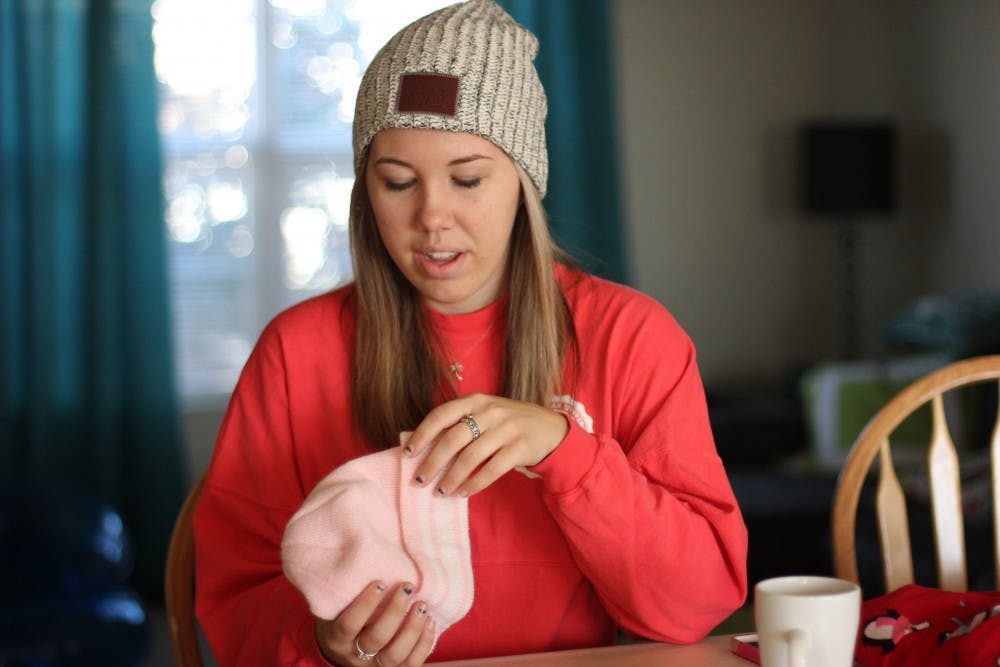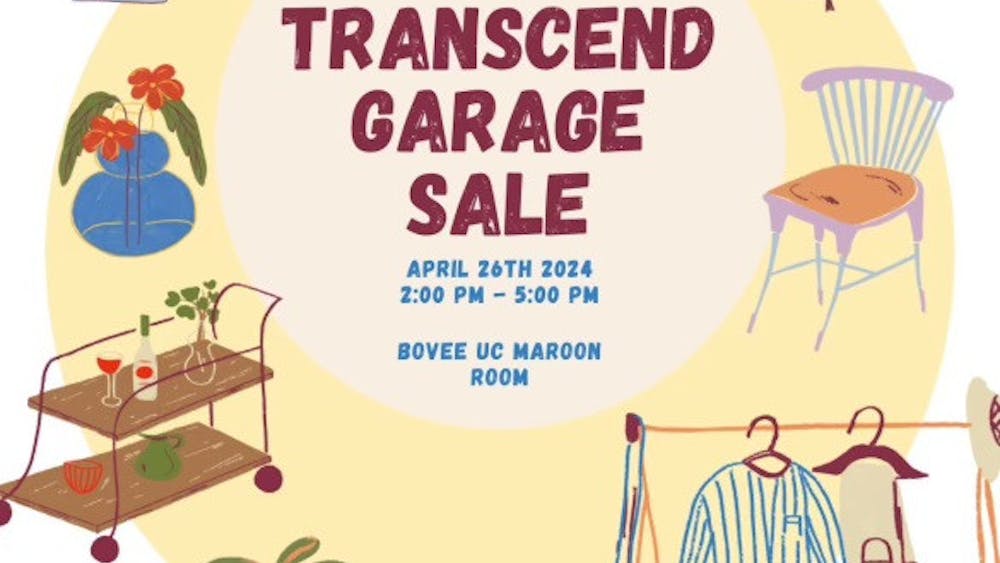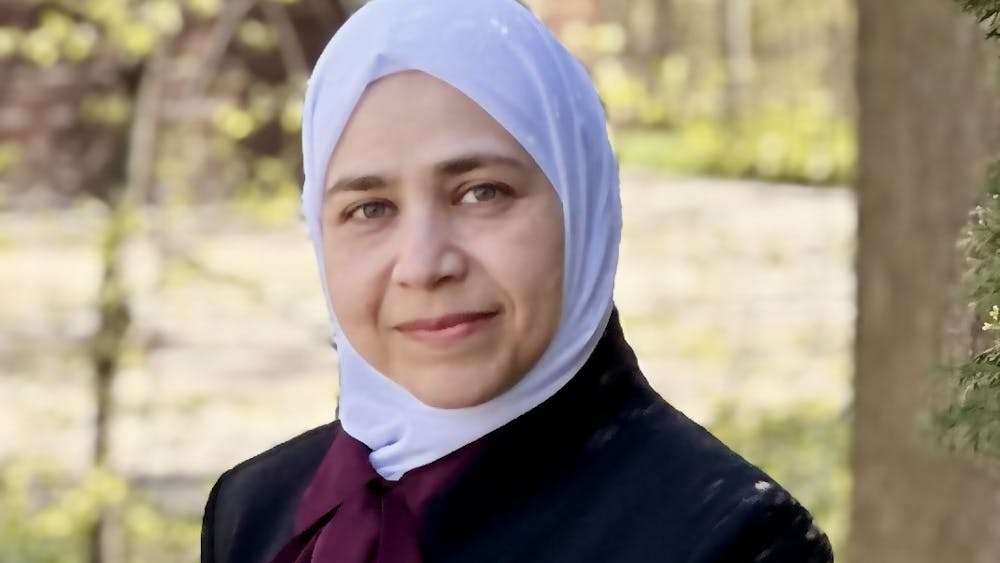Beyond awareness

Allie Lichtenstein clearly remembers when a friend asked her to help shave her head.
She also remembers being there as her friend contemplated getting a double mastectomy.
The Illinois senior was 19 when her sorority big, Stephanie Urbanawiz, was diagnosed with breast cancer. Urbanawiz lost her battle with the disease last March, just before she turned 30.
“She was going to school to be a pediatric oncologist, because she wanted to help children with cancer," Lichtenstein said. "She died from cancer right before she started her clinicals."
Lichtenstein said Stephanie kept going to classes through her treatment and graduated with a 4.0 GPA.
“She’s a badass," she said. "She went into remission and that was great, and then she told me in person at Homecoming two years ago that (the cancer) came back."
The rarity of breast cancer taking the life of someone so young shook Central Michigan University's campus. Stephanie’s involvement in Greek Life especially affected her chapter and the rest of the community.
“Obviously it hurts and breaks my heart every single day, but I know she would be the kind of person who would rather preach about awareness and give everybody all of the medical advice that she could, making sure that there is information for people our age,” Lichtenstein said.
Lichtenstein said it is her honor to carry Stephanie’s legacy and she tries to say things her sorority big would have wanted people to know. She advocates for breast cancer awareness and stressed the importance of knowing how to perform self exams and giving people basic education about the disease.
“We can preach all day everyday about finding a cure. Until then, we need to know how to take care of ourselves,” Lichtenstein said.
Pink ribbons passed out by student organizations will be worn by CMU students during October to raise awareness for the disease. Whether they donate money to research or not, many businesses have separate logos that incorporate the color pink to raise awareness for breast cancer during October.
Between clothing lines and other pink merchandise, breast cancer road races and various volunteer and awareness opportunities, there are a plethora of ways to be involved during breast cancer awareness month.
Being affected by the disease sometimes pushes people to be advocates, or makes them withdraw from the month that brings back memories of how breast cancer affected them or loved ones.
Survivor’s perspective
Despite being a breast cancer survivor, Associate Professor of Marketing Crina Tarasi has distanced herself from the activities surrounding breast cancer awareness month.
“In a way, I ignore it,” Tarasi said. “But I’m very grateful for the people who participate and offer their support. I don’t feel drawn to participate in it because for me the cancer was an awakening call. It was in many ways a ‘Wake up and live life, don’t postpone the things you want to do.’”
She found comfort in support groups when she had the disease, but now builds other communities through people who are like-minded, Tarasi said. The cancer was a wake up call, she said, and made her want to take advantage of opportunities and life her life to the fullest. She has since taken up dance classes, and has found an outlet there to express herself.
One in eight women will be diagnosed with breast cancer in her lifetime and one in 36 women will lose their life to the cancer, so the disease still affects students who might have a family member or a friend with the disease.
Missing premise
Dr. Sandra Howell is an instructor at the College of Medicine at CMU, and has specialized in the treatment of benign and malignant breast diseases in the Mount Pleasant area for the past 15 years.
Howell said there is a term in the medical community that she believes is being inconsistently used in medical literature and inappropriately in some research.
The idea of "over diagnosis" has been gaining steam in the medical community in the treatment of various diseases.
Studies have shown that encouraging screening and testing for breast cancer and diagnosing it in its early stages will not affect the survival rate of the person diagnosed, she said.
“We’re seeing a lot of articles that jump from that conclusion, 'If we diagnose this but it doesn’t affect survival, why are we trying so hard to diagnose it, and why do we treat it.'"
Because people are focusing on the survival rate alone, Howell said they are leaving out a key premise: survival is not the only thing that matters when treating breast cancer.
“Treating stage zero breast cancer and premalignant breast regions will allow a percentage of women with these conditions to potentially avoid major surgery, chemotherapy and radiation therapy," she said.
There are studies that suggest the diagnosing of early-stage or premalignant breast conditions is unnecessary, calling the practice "over diagnosis," and said these ideas are flawed because they do not discuss, or account for, quality of life issues, she said.
“We’ve gotten better and better at diagnosing (early stages of breast cancer) and removing it before it can become a cancer, and that has contributed to the decreasing incidents,” Howell said.
Mammography rates have decreased, which Howell attributes to the idea of over diagnosis. Howell predicts the rate of breast cancer may increase as well if people aren't properly being checked.
Tarasi said she felt pressured into full treatment when she was diagnosed, when she knew that was not the right option for her. Her view is that screenings that won't affect survival rate instill unnecessary fear in people.
Lichtenstein, on the other hand, said she would push for additional screenings.
“They tell us you don’t need a mammogram until you’re 35, but (Stephanie) would have never caught this then,” she said.
Howell acknowledged that if screenings and treatment were handled incorrectly, it could potentially instill unnecessary fear in patients, but she said that accounts for a very small amount of cases.
Howell, Tarasi and Lichtenstein had varying degrees on the topic of “over diagnosis,” but generally all came to the consensus that empowering women to educate themselves on the disease, their own risk factors and performing self examinations was the most important thing.
“The amount of information we get about sexually transmitted illnesses, I think we should get the same amount of information about taking care of ourselves and warning signs of illnesses (like breast cancer and other forms of cancer),” Lichtenstein said.
How to help
Colleges Against Cancer raises awareness for breast cancer during October. They do not specifically raise money for funding of treatment and research because of how little it impacts college-age students, said Yale junior Maddi Klause.
Klause's mother fought breast cancer for four years before she passed away when Maddi was 15. At CMU Maddi is involved with being an advocate for cancer by being a member of CAC.
Instead of raising money for breast cancer research specifically, CAC focuses on raising money for the American Cancer Society through Relay For Life which goes to raising awareness and research for all cancers.
“Our money from Relay, we have to pay the Student Activities Center, so Relay is still a good thing to donate to but part of your money could be paying CMU, or could be paying one of the acts we have to pay,” Klause said. “Go right to the source. As much as I don’t like to say that because I do Relay and I try to raise money, go right to the source — don’t give your money to me, donate to the ACA website instead.”
She has donated to the breast cancer nonprofit, Susan G. Komen before, and liked how she could donate in memory of someone after the death of her mom.
“When you look into where the money goes, it doesn’t all go to cancer research,” Klause said. “A lot of it goes to funding for their advertisements.”
Focusing on smaller charities and “going right to the source” is one of the main things Klause does now before she donates.
“I think it's important to raise awareness, but a lot of it is the hype about the big name brand," Lichtenstein said. "You can help more sometimes by reaching out to the little people. That’s where your impact is going to lie,”
Tarasi also has donated to Susan G Komen, before she realized her name had been added to an email list and her information had been solicited to other organizations.
“From the point of view of nonprofits in general, they often capitalize on that goodwill of people and quite often they will pay a huge chunk — up to 80, 90, or 95 percent of what they can go towards other for-profit operations,” Tarasi said.
Tarasi said doing a simple Google search is sometimes enough to see if a charity is credible or not, but the best way to know for sure is to get involved and donate time in addition to money.
“If you’re going to look into where you’re going to buy a car, why not look into where you’re going to donate money to,” Klause said.
For more information on the Susan G. Komen foundation, visit www5.Komen.org for annual financial reports.
Editor's note: This story has been updated and corrected.





